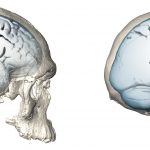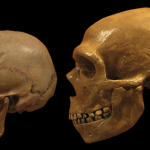Did Neanderthals draw? This B.C. researcher is going to test DNA in old cave art to find out0
- Ancient Archeology, From Around the Web
- June 1, 2020
National Geographic funds UVic paleoanthropologist to solve 40,000-year-old mystery

National Geographic funds UVic paleoanthropologist to solve 40,000-year-old mystery

The Paleoneurobiology Group of the Centro Nacional de Investigación sobre la Evolución Humana (CENIEH), led by Emiliano Bruner, has just published a morphological analysis of the brains of Neanderthals and modern humans in the Journal of Human Evolution, whose results suggest that the more rounded shape of modern human brains is due in part to larger and bulgier parietal lobes, on average.

Source: Science Magazine For 10 years, geneticists have told the story of how Neanderthals—or at least their DNA sequences—live on in today’s Europeans, Asians, and their descendants. Not so in Africans, the story goes, because modern humans and our extinct cousins interbred only outside of Africa. A new study overturns that notion, revealing an unexpectedly

Local people called them “Ciampate del Diavolo” or the devil’s trail, as only a supernatural entity could leave its footprints in apparent solid rocks. Discovered in 2001, for archaeologists the devil’s trails site near the Italian town of Roccamonfina is a rare example of humanoid footprints preserved in volcanic rocks.

Called BAZ1B, it may also help explain why domesticated animals look cuter than their wild kin

Scientists find 257 prints that were preserved in wind-driven sand 80,000 years ago

Prof Clive Finlayson, director of the Gibraltar Museum, explains why some old assumptions about the intellectual capabilities of our evolutionary relatives, the Neanderthals persist today. But a body of evidence is increasingly forcing us to re-visit these old ideas.

Interbreeding with ancient humans means ancient genetic fragments still shaping heads of some Europeans

A pair of researchers at Temple University has found evidence that suggests Neanderthals mated and produced offspring with anatomically modern humans multiple times—not just once, as has been suggested by prior research.

Ancient periods of cold and dry climate helped our species replace Neanderthals in Europe, a study suggests.